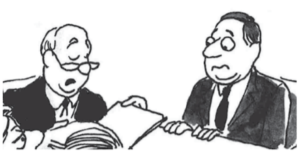Decisions – From ‘I’ to ‘We’

Welcome to part two in this micro-series on improving meeting effectiveness. In part one, I discussed the importance of coherence and what a difference it makes to meetings. In this section, I’ll talk about decision making.
A lot of people associate meetings with unproductive time-wasting; sitting in a hot office as the same issue is discussed again and again. As hard as it might be to be to believe, this doesn’t have to be the case.
Chances are you made the decision to continue reading by yourself. If that’s not the case, perhaps you’ll still get something out of it. Stick around.
The five kinds of decisions.
Although you will make decisions abut any number of things over the course of a workday, the actual categories of the decisions you make as a leader are surprisingly simple:
- I decide: As it sounds. No discussion needed.
- I consult, then decide: I will ask others, then decide.
- We decide: We will decide together, and I will drive the process.
- You consult and I decide: You have raised an issue for me to decide on.
- You decide: I have delegated the decision to you.
Do you recognise your preferred style? Most people have one that they often default to. From my experience, most people stay in either ‘I decide’, or ‘We decide’.
While it is perfectly fine to have preferences, being permanently stuck in one style is not good leadership. Always defaulting to ‘I decide’ does not involve people enough, and defaulting to ‘we decide’ does not involve enough directive leadership.
As a team leader, you have two tasks regarding this.
Task 1 – Match process and needs
There is no one decision making process that applies to all situations.
Improving the efficiency of your meetings means that you, as a leader, must match the decision making process to the specific business issue. There is no automatic formula to use for this, you must rely on your intuition and business sense.
Fortunately, which decision making process to use is usually a fairly straight forward affair. Is is not a good idea to consult with someone on their arch-enemy’s performance bonus, for example. You probably won’t get a helpful view.
Task 2 – Make the process known
Your second task as a team leader is to make sure all members of your team know which process is being used.
This is one of the biggest hangups in meetings for a lot of teams. One person might think the final decision rests on them (‘I decide’) while the rest of the team believe it to be a ‘We decide’ issue. Ultimately, the decision goes round and round, no clarification is given and nothing gets done.
As team leader, you must make sure everyone knows what decision making process is being used, and who is involved. Once you have decided, make sure the entire team knows it. You haven’t reached agreement until everyone knows what has been decided in the same words. Writing it down where everyone can see is a surprisingly effective method for keeping track of this, and will save a lot of time in the long run.

